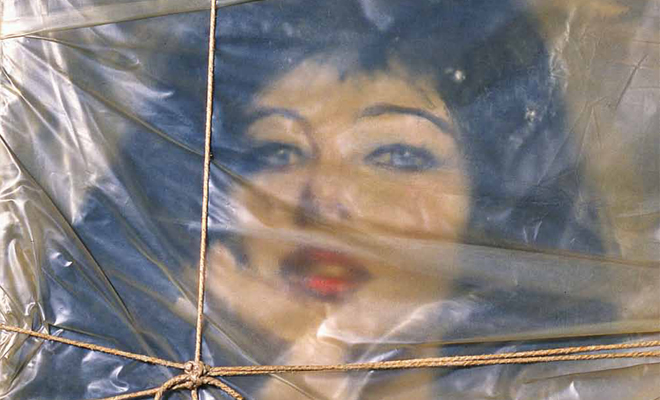Summer Reading: “Artists in Love”

An image of Christo's Wrapped Portrait of Jeanne-Claude, 1963, is the cover of Veronica Kavass' book Artists in Love.
Editor's Note
What could be more satisfying than a summer fling? How about a summer read? Writer Rachel Gorman turns to Veronica Kavass’ Artists in Love for a little of both. If you missed the Loyola grad’s book when it was first published last fall, now’s the time to pick it up, crank the AC, and get reading.
The public has a longstanding fascination with artists’ romantic lives, particularly when it comes to their relationships with other artists. Perhaps secondly only to “starving” artists, famous ones are popularly imagined as intensely passionate, unconventional, and indefatigably creative. These men and women with a seemingly supernatural zest for life—I mean, joie de vivre (they seem to always be living in France)—flout social mores and manage to make history-changing work while doing it. It is the intellectual and creative prowess of these mythic artists that makes them seem exciting, brilliant, a little bit glamorous and, let’s face it…totally hot. For artist duos, these same idealizations are doubled, intensifying their relationships into grandly fabled love stories. There’s an artist relationship trope for every romantic: the fated professor and pupil (Wassily Kandinsky and Gabriele Münter), the master and muse (Man Ray and Lee Miller), and for us more modern types, the collaborative and spiritually supportive partnership of equals (Hans Arp and Sophie Taeuber-Arp).
Artists in Love is a big and beautiful coffee table book—one author Veronica Kavass readily admits will be read for the pictures first—and it documents the stories of an enticing range of what could easily be called modern art history’s “power couples.” Having trained as an oral historian with StoryCorps, Kavass is quick to note in the introduction of the book that some academics find the biographical draw in art history “problematic,” but for her, examining how creative relationships fostered or inhibited artistic growth and expression is what brings art history “more to life.” Indeed, the narratives that Kavass highlights in the pages of her book do bring life—in all its messy, emotional complexities—to artist couples, both household names and some lesser knowns. There are a few partnerships (the Delaunays, the Albers, those wonderful Arps) that seem blessed with that rare love that is completely mutualistic and nourishing. Just as often, if not more so, the Artists in Love stories take a tragic turn. In her selection of relationships to spotlight, Kravass seems to suggest that it’s not love but pain—the emotional devastation wrought by scandal, alcoholism, abuse and rampant (and I mean rampant) infidelity that has served as the impetus behind artistic progress. It’s the frank, realistic portrayal of love, heartbreak, and its myriad effects on creativity that pushes the book beyond stereotype, allowing a more genuinely intimate and fleshed-out portrait of creative—but ultimately only human—beings to emerge.
Editor's Note
Artists in Love is available at Octavia Books (513 Octavia Street) in New Orleans.



